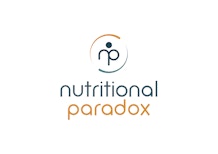The global food system is failing large swaths of humanity who are deficient in nutrients needed for good health, and are either overweight or hungry.
What we eat has become the leading cause of disease and death worldwide, surpassing deaths caused by smoking or alcohol. An estimated 11 million deaths in 2017 were attributable to poor diet, according to the recent Global Burden of Disease study.
Diets high in sodium, low in whole grains, and low in fruit together accounted for more than half of such deaths that year, the researchers found.
Against the backdrop of climate change and the steep environmental cost of modern farming systems—soil degradation, water scarcity and pollution, to name a few—more experts are calling for healthier diets and an overhaul of food systems.
“Food is the single strongest lever to optimise human health and environmental sustainability on Earth,” stated EAT, an advocacy group for food system transformation, in its summary of a report released in January 2019 by the EAT-Lancet Commission on Healthy Diets for Sustainable Food Systems.
This dismal state of affairs can only be changed if farmers and others who work in agriculture implement more sustainable practices, governments make a greater effort to promote healthy living, and food companies reduce the amount of harmful ingredients in their products, the United Nations (UN) said recently.
Speaking to Eco-Business, food and nutrition experts elaborated on three key solutions.
“
Many people who don’t eat well, can’t because they have no money, they don’t have the nutritional knowledge to make good choices and, in some cases, there is just not a lot of nutritious food available.
Regina Moench-Pfanner, founder, nutrition and health consulting firm ibn360
Make nutrition desirable, affordable
“If you’re poor, your first priority is to feed yourself and your family with whatever makes you full. Everything else, including the nutritional value of the food, is not important,” said Regina Moench-Pfanner, founder and chief executive of ibn360, a Singapore-based consulting firm specialising in food, nutrition and health.
Moench-Pfanner, who has spent over 30 years developing and managing nutrition and health programmes worldwide, put it bluntly: “Many people who don’t eat well, can’t because they have no money, they don’t have the nutritional knowledge to make good choices and, in some cases, there is just not a lot of nutritious food available.”
Furthermore, snacking has taken off in many societies, driven by the marketing budgets of companies that make soft drinks, potato chips and other junk food that load up on flavour but deliver little in terms of nutrition.
This has resulted in the nutritional paradox of obesity and malnutrition seen in many disadvantaged communities. To bring together people passionate about tackling the issue, entrepreneur Christoph Langwallner initiated the platform NutritionalParadox.com this year to encourage science-based discussion and collaboration among nutritionists, public health experts, farmers and other professionals. Langwallner is also co-founder and chief executive of Singapore-headquartered food science company NamZ.
Healthy food products must be affordable, even desirable, and their manufacturers must be able to sell enough of them to offset the lower price and make a profit. “The more scalability you have in demand, the cheaper the price can be, and this scalability has always been the real problem and (obstacle) for companies,” said Moench-Pfanner.
A report funded by the Global Alliance for Improved Nutrition identified a few essential strategies for food firms planning to cater to low-income households. These include selling each product in a variety of sizes so that daily-wage workers can afford the smaller portions while employees who are paid bi-weekly or monthly can buy the larger ones.
Whether poorer communities can afford to eat healthily is still the subject of debate.
Researchers recently found that the EAT-Lancet diet—which comprises whole grains for 35 per cent of the daily average of 2,500 calories, 14 grams of beef, lamb or pork, 300 grams of vegetables and 200 grams of fruit, among other things—would cost an average US$2.84 per person per day, putting it beyond the reach of one in five people in the world.
But a study has shown that countries with the highest quality diets were not the wealthier ones, but several in sub-Saharan Africa including Chad, Mali and Cameroon. Epidemiologist and lead author of the 2015 paper, Fumiaki Imamura, told The Guardian that his team looked at quality, and not quantity of the food eaten in various countries and assumed that everyone in the world was consuming 2,000 calories a day.
Growing the right food, in the right ways
For healthy food products to be truly sustainable, their ingredients have to be ecologically sustainable too.
Scientists have called for action to address decreases in crop yields due to climate change, and balanced diets featuring more plant-based foods that incur a lower carbon footprint.
“Humans can eat 300,000 crops but nearly 60 per cent of our calories come from just three: wheat, maize and rice. Others, like pulses, are very nutritious and can reduce carbon dioxide emissions and restore soil health,” said Simon McKenzie, director of global consultancy Bridge Partnership, which has advised food firms, and co-founder of the Bridge Institute, its not-for-profit arm.
“It’s imperative that food manufacturers broaden the base of crops that they use, so that there are many more future-fit crops being utilised. This will be good for both people and the planet,” he added.
Future-fit crops are those that can withstand predicted climates, require less water, are nutrient-rich, and can produce good yields economically on degrading, degraded or marginalised land, said NamZ.
The firm has identified the Bambara groundnut as such a crop, and collaborates with subject matter experts such as the Crops for the Future Research Centre, an international organisation devoted to promoting and facilitating the greater use of neglected and underutilised crops, to develop a breeding programme for new varieties of the groundnut that can grow on poor soils.
NamZ has also created healthier instant noodles which are made from the groundnut and dehydrated through steaming and high-velocity air rather than deep-frying. It plans to start selling them in Malaysia, where instant noodles are a comfort food, in 2020, and is aiming for them to become part of nutritious food programmes in the country’s schools.
“
It’s imperative that food manufacturers broaden the base of crops that they use, so that there are many more future-fit crops being utilised. This will be good for both people and the planet.
Simon McKenzie, director, Bridge Partnership and co-founder, Bridge Institute
Curbing food loss and waste is also crucial, as one-third of food produced for human consumption each year is lost or wasted.
The EAT-Lancet report suggested giving more help to farmers in poor and middle-income countries to store their crops before getting them to the market.
In richer countries, suggestions include changing notions on “ugly” food and the “use by” labels of products.
Regulation and education
Even as food companies innovate to improve nutrition, governments must do more to smooth their way, said the experts. Per Pinstrup-Andersen, professor emeritus and professor of the Graduate School at Cornell University, who focuses on food issues, said that many consumers do not have a good understanding of the links between diet and health.
“Educational campaigns in schools and enhanced nutrition education in medical schools are critically important. Physicians should have the educational background to identify ways to improve the diets of individuals and groups to prevent and treat poor health,” he said.
McKenzie noted that some government interventions to regulate the advertising of unhealthy foods have been successful. Since November 2013, Ecuador has mandated that food products high in sugar, sodium or saturated fat must have a big red or yellow label on the front indicating these traits. In June 2016, Chile implemented a similar law using black octagonal labels.
“Ecuador has seen a reported 35 per cent reduction in such products being consumed, and many food companies in both countries have modified their products to avoid these labels,” said McKenzie.
In Singapore, the government announced in October that a new colour-coded nutrition label will be mandatory for pre-packaged beverages that are high in sugar. And in a world first, it will ban advertisements of drinks that receive the poorest grade on the label on all local mass media platforms, including websites and social media.
Governments should learn from private firms in emphasising aspirational messages along with nutritional ones in their food-related public health campaigns, said Moench-Pfanner. “Many companies today have happiness at the core of their marketing, and many poor and low-income consumers are attracted by their products,” she said.
Langwallner said that more governments are moving against unhealthy food products with taxes on specific ingredients, restrictions on food advertising, mandatory packaging labels and other measures.
“We’re seeing a trend towards the clamping down of the food industry, similar to what was done to the tobacco industry many years ago,” he said. “If the food industry does not act to better human health and well-being in the way that food is manufactured, it will be forced into it. We, as an industry, must change or be left behind.”













